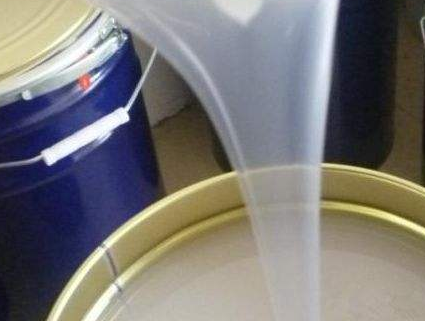What is the difference between silicone and silicone rubber? Many friends who have not been in contact with silicone or the rubber industry may not have a special understanding of this problem. Now I will introduce it in detail.
One: what is silica gel
According to the name in some chemistry books, "silica gel" should be a condensate of silica, and its molecular formula is mSiO2·H2O. The "silica gel" is a highly active adsorption material, which is an amorphous substance, insoluble in water and any solvent, non-toxic, odorless, stable in chemical properties, and does not react with any substance except strong alkali and hydrofluoric acid. And what we often call rhinoplasty, the silicone filled in breast augmentation is this kind of silicone.
Inorganic silica gel is a highly active adsorption material, usually made by reacting sodium silicate with sulfuric acid and undergoing a series of post-treatment processes such as aging and acid foaming. Silica gel is an amorphous substance, and its chemical formula is mSiO2 .nH2O. It is insoluble in water and any solvents, non-toxic, tasteless, chemically stable, and does not react with any substances except strong alkalis and hydrofluoric acid. Various types of silica gel form different microporous structures due to different manufacturing methods.
The chemical composition and physical structure of silica gel determine that it has many characteristics that other similar materials are difficult to replace: high adsorption performance, good thermal stability, stable chemical properties, and high mechanical strength. Because of its chemical properties, it is used to make many kinds of silicone products, such as silicone seals, silicone seals, silicone kitchenware and so on.
silica gel is divided into: macroporous silica gel, coarse pore silica gel, B-type silica gel, fine pore silica gel according to its pore size. Due to the difference in pore structure, their adsorption properties have their own characteristics. Coarse-pored silica gel has a higher adsorption capacity when the relative humidity is high, while fine-pored silica gel has a higher adsorption capacity than coarse-pored silica gel when the relative humidity is low. Type B silica gel has a larger pore structure between coarse and fine pores. Between the pores, the adsorption capacity is also between the coarse and fine pores. Macroporous silica gel is generally used as a catalyst carrier, matting agent, toothpaste abrasive, etc.
2: What is silicone rubber
But in the mold industry, the "silica gel" we mentioned is usually not the silica hydrate silica gel mentioned above. Silicone in the mold industry is usually referred to as a kind of polysiloxane. Simply put, the "silicone" in the mold industry is a synthetic rubber. Because it contains silicon atoms, it is called silicone rubber, so it is referred to as "silicone" for short.
There are many types of "silica gel" in the mold industry with different uses. As for product performance, there is a big gap depending on the raw materials, but in general this kind of "silicone" (silicone rubber to be precise) will show a trend to replace rubber in the future. We often mention "silica gel" not just the condensate of silica, nor the siliconized synthetic rubber in the mold industry. Instead, the above two types of products are called "silica gel". At this time, we divide "silica gel" into organic silica gel and inorganic silica gel. Inorganic silica gel is the first kind of "silica gel" we mentioned-silica hydrate.
The silicon-containing synthetic rubber in the mold industry is called organic silica gel because it contains hydrocarbon groups. When talking about "silicone rubber" in some places, it is defined as "between organic and inorganic substances", but more manufacturers of silicone rubber still claim to produce silicone.
3: Classification of silicone rubber
Silicone rubber is one of the most widely used products in the production of silicone products. After vulcanization, silicone rubber has excellent high temperature resistance, low temperature resistance, weather resistance, water repellency, electrical insulation, and physiological inertia.
The main properties and applications of silicone rubber products: according to its vulcanization temperature, silicone rubber can be divided into two categories: high temperature (heating) vulcanization and room temperature vulcanization. High temperature rubber is mainly used to manufacture various silicone rubber products, while room temperature rubber is It is mainly used as an adhesive, potting material or mold.
1. Hot vulcanized silicone rubber (HTV)
Hot Vulcanized Silicone Rubber (HTV) is the most important category of silicone products. Methyl vinyl silicone rubber (VMQ) is the most important category in HTV, commonly known as high temperature rubber. Methyl vinyl silicone rubber (raw rubber) is a colorless, odorless, non-toxic, and no mechanical impurities. The raw rubber is mixed with appropriate reinforcing agents, structure control agents, vulcanizing agents and other additives as needed. Refining, then heating and compression molding or extrusion molding, and then two-stage vulcanization into various products. Its products have excellent electrical insulation, strong resistance to arc, corona, and spark, waterproof, moisture-proof, impact resistance, shock resistance, physiological inertia, and air permeability.
Mainly used in aviation, instrumentation, electronic appliances, navigation, metallurgy, machinery, automobiles, medical and health and other departments, can be used to make various shapes of sealing rings, gaskets, tubes, cables, and can also be used as human organs, blood vessels, breathable membranes and Rubber molds, mold release agents for precision casting, etc.
2, room temperature vulcanized silicone rubber (RTV)
room temperature vulcanized silicone rubber generally includes two categories: condensation type and addition type. The addition type room temperature glue is based on a linear polysiloxane with vinyl groups and a hydrogen-containing siloxane as a crosslinking agent. In the presence of a catalyst, a crosslinking reaction occurs at room temperature to medium temperature to become an elastomer. It has good heat resistance, water repellency, and electrical insulation. At the same time, due to the introduction of active end groups, it has excellent physical and mechanical properties, especially in tensile strength, relative elongation and tear strength. Improvement. It is suitable for a variety of vulcanization methods, such as radiation vulcanization, peroxide vulcanization and addition molding vulcanization, and is widely used in heat resistance, moisture resistance, electrical insulation, and high-strength silicone rubber products.
Condensation-type room temperature vulcanized silicone rubber is characterized by the condensation reaction between silicone hydroxyl and other active materials, which can be cross-linked to become an elastomer at room temperature. The products are divided into two-component packaging and two-component packaging form. One-component room temperature vulcanized silicone rubber (RTV-1 rubber for short) is one of the main products in condensed liquid silicone rubber. It is usually formulated from base polymer, crosslinking agent, catalyst, filler and additives. The product is packaged in a sealed hose, squeezed out during use, and can be vulcanized into an elastomer after being exposed to air, which is extremely convenient to use. The vulcanizate can be used for a long time in the temperature range of (-60~+200℃), has excellent electrical insulation properties and chemical stability, is resistant to water, ozone, weathering, and has good adhesion to a variety of metal and non-metal materials. Accessibility. It is mainly used for coating various electronic components and electrical equipment. The encapsulating material plays the role of insulation, moisture-proof and shock-proof; as a surface protection material for semiconductor devices; also as a sealing filler and elastic adhesive.
3. Two-component room temperature vulcanized silicone rubber (referred to as RTV-2 rubber)
Two-component room temperature vulcanized silicone rubber is not as convenient to use as RTV-1 rubber, but its component ratio is rich in changes. One variety can obtain vulcanized products with various specifications and properties, and it can also be deeply vulcanized, so it is widely used in electronic appliances. , Automobile, machinery, construction, textile, chemical, light industry, printing and other industries for insulation, encapsulation, caulking, sealing, moisture-proof, anti-vibration and making roller materials. In addition, because RTV-2 has excellent mold release properties, it is widely used as a soft mold material for the reproduction and manufacture of cultural relics, handicrafts, toys, electronic appliances, and mechanical parts.
One of the typical applications of silicone sealant is glass curtain wall. The glass and aluminum alloy frame are bonded with organic silicon structural adhesive as the exterior wall material, and the expansion joint is waterproof and sealed with organic silicon weather-resistant adhesive. Other applications include the peripheral sealing of aluminum alloy doors and windows and plastic steel doors and windows, the joints of glass installation and moving grooves, the sealing of rivets and fixing screws: sanitary ware and countertops, walls, and furniture in kitchens, bathrooms, and toilets. Waterproof sealing between the aquariums, ceilings, metal roofs, showcases, counters, wall panels, and color steel plates; used for waterproof caulking and sealing between high-grade highway plates.
In addition to construction sealants, RTV also includes sealing materials used in aerospace, nuclear power plants, electronics, machinery, automobiles and other industries, silicone potting materials used for potting electronic components, and silicone used as soft mold materials Mold glue etc. The demand for these varieties is relatively small, but in many cases they are indispensable.
From the above three situations, what is the difference between silicone and silicone rubber? The concept of the term "silicone" is very confusing, but unfortunately, there is no state clearly defined name so far. When we hear the word "silica gel", we must understand whether it is silica or silicon-containing synthetic rubber, or in the final analysis, inorganic silica gel or organic silica gel.
Jinyu Machiery provide the whole set of silicone machines, there are silicone dispensing machine, silicone vulcanizing hydraulic machine, silicone mixing color machine, and more related machines. Please check on our web site if you are in need and feel free to contact us.

 Ms. Bear
Ms. Bear


